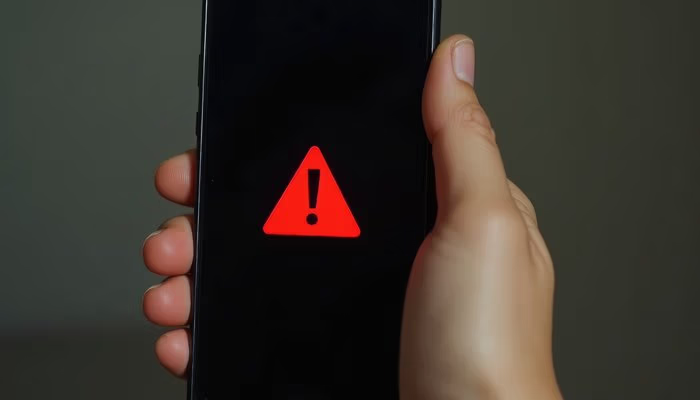Summary: Commissioning inspections play a pivotal role in verifying the quality, functionality, and compliance of critical systems in construction projects. This process involves verifying that all systems, such as pipe installations and electrical components, are correctly installed and functioning as intended. Inspections during commissioning aim to ensure compliance with project requirements and quality standards. Documentation is critical throughout this process, with tests like pressure testing and functional checks being essential. Armed with software and test plans, the commissioning team, plays a role in preventing issues and facilitating a seamless handover process. Quality inspections and a management system improve project delivery by detecting failures and establishing a foundation for ongoing maintenance.
Quality Control Inspections: Ensuring Construction Quality
Quality control inspections ensure the integrity of construction processes, confirming that design and installation specifications are rigorously followed. Inspection teams carry out these checks to confirm that the construction quality satisfies predetermined criteria. Qualified inspectors systematically check for errors in installation construction defects or deviations from design specifications. Early detection of issues through these inspections allows for corrections, ensuring progress on the project. This detailed checklist outlines the requirements for every system and component involved in the building project. It acts as a tool for the commissioning team to confirm that different systems like HVAC, electrical, plumbing, and automation are fully completed and operational. The commissioning team can ensure that all necessary inspections and systems are prepared for use by following the checklist.
The Importance of Quality Assurance in Construction
Quality assurance mitigates project risks by identifying issues early, preventing costly rework, and ensuring the long-term durability and safety of the structure. Quality control (QC) checks can. Resolve potential issues early on, reducing the chances of rework or project delays. Conducting QC inspections ensures that the construction work adheres to specified standards, guaranteeing the built environment’s durability, safety, and functionality.
Pre Commissioning Checklist: Preparing for the Commissioning Phase
The pre-commissioning checklist serves as a critical tool to ensure all prerequisite tasks, including equipment installation and system integration, are complete before formal commissioning. This list focuses on tasks that must be finished before starting the commissioning process. It covers equipment installation, system integration and initial testing. Following this checklist ensures that all prerequisites are met before formal commissioning activities
Definition of Quality Control Inspections (QC)
QC inspections are a cornerstone of the construction process, ensuring the project adheres to design standards and industry benchmarks throughout development. These inspections are carried out by personnel who know project requirements and quality benchmarks. The primary aim is to identify any construction deficiencies, errors, or deviations from design specifications that could impact the project’s quality and functionality.
Quality Control Inspection Guidelines
The inspection checklist is a strategic tool that ensures every aspect of construction meets predefined standards, from materials to installation methods. This checklist outlines quality criteria and benchmarks that must be met for each aspect of the construction process. It encompasses factors such as materials used, artistry, installation methods and compliance with regulations. The checklist acts as a roadmap for inspectors to methodically evaluate the quality of construction work and pinpoint any deviations or deficiencies.
Delays in commissioning?
Leverage commissioning software to streamline every phase, prevent delays, and ensure a seamless handover process.
Key Contrasts Between QC Inspections and Commissioning Inspections
1. Emphasis and Timing
The key difference between QC and commissioning inspections is their focus: QC ensures adherence to quality during construction, while commissioning confirms system functionality post-construction. QC inspections primarily ensure adherence to quality standards during the construction phase when installation work is being carried out. In contrast, commissioning inspections occur during the commissioning phase after completion of construction activities. These assessments ensure that commissioned systems and components function correctly and meet performance requirements.
2. Differences in Documentation Requirements
Commissioning inspections demand extensive documentation to validate system performance, including the creation of a commissioning report. This report verifies all aspects of the commissioning process, documenting testing, verification, and performance of the commissioned systems. It proves that the systems are functioning as intended and meeting the project requirements set by the owner. On the other hand, while QC inspections may involve some documentation, they primarily focus on identifying construction deficiencies and deviations rather than extensive documentation.
3. Involvement of Construction Teams
The involvement of construction teams differs between QC and commissioning inspections. During QC inspections, construction teams play an active role in handling installation and construction activities, while QC inspectors work closely with them to identify and address quality issues. In contrast, commissioning inspections focus on the commissioning team, who is responsible for verifying and testing the functionality of commissioned systems.
4. Verification Methods
Verification in QC inspections focuses on construction quality, while commissioning inspections test the functional performance of completed systems. In QC inspections, emphasis is placed on validating construction quality through inspections, measurements and tests to ensure compliance with specified standards. Conversely, commissioning inspections focus on functional performance testing to verify that commissioned systems operate correctly.
Advantages of Conducting Inspections During Commissioning and Quality Control
1. Ensuring Proper System Operation
Commissioning inspections are essential for verifying the operational integrity of systems, preventing future malfunctions and enhancing system performance. Potential issues can be identified by conducting inspections and tests. Resolved before systems are put into operation. This helps reduce the risk of system failures or inefficiencies, ensuring that building systems work as intended.
2. Risk Management and Error Prevention
Both QC and commissioning inspections play vital roles in risk management, preventing errors early and ensuring smooth project progression. QC inspections help detect construction flaws, allowing for prompt corrections to avoid costly rework or delays. Commissioning inspections ensure commissioned systems undergo testing and validation to minimize failures or performance issues. Addressing these concerns during the commissioning phase helps the project progress smoothly while reducing risks and associated expenses.
3. Enhancing Energy Efficiency and Reducing Environmental Impact
Commissioning inspections are key to optimizing energy use and minimizing environmental impact by ensuring systems operate at peak efficiency. The commissioning team can identify opportunities for energy optimization by tuning systems and implementing operational improvements through functional performance tests. Energy Modeling often supports this process by simulating system behavior under real-world conditions, enabling informed adjustments. These inspections help reduce energy waste and support sustainable building operations.
Differentiating QC and Commissioning for Project Success
QC inspections focus on ensuring and validating quality during the construction phase, addressing potential issues before they escalate. In contrast, commissioning inspections take place during the commissioning phase, focusing on testing and verifying the functionality and performance of completed systems. Both QC and commissioning inspections play a crucial role in reducing risks, preventing errors, and driving the overall success of the project. They enable early problem resolution, minimizing rework, delays, and operational disruptions. Understanding the distinctions between QC and commissioning inspections is vital for project stakeholders to guarantee timely project completion, adherence to quality standards, and optimal system performance.
FAQ | Commissioning Inspections
What are the main duties of a commissioning agent?
The core responsibilities of a commissioning agent:
Develop the commissioning plan
Review design and construction documentation
Observe and document performance evaluations
Provide recommendations for improvements
Compile the commissioning summary
How do quality control (QC) inspections ensure high-quality standards?
QC inspections contribute to quality assurance by pinpointing any construction flaws, mistakes or deviations from the design. They play a role in guaranteeing that the construction aligns with the quality benchmarks and help minimize risks linked to substandard artistry or installation methods.
How do QC inspections support ongoing quality management?
QC inspections support quality control by identifying initial construction flaws or deviations. The construction team can effectively uphold quality standards by addressing these concerns highlighted during inspections. Prevent potential rework or complications. Regular QC assessments ensure that project quality is consistently monitored throughout its duration.
What benefits do digital checklists bring to commissioning?
Digital checklists in commissioning streamline inspections, ensuring accuracy and real-time updates. They reduce human error, improve efficiency, and provide easy access to data. This enhances team collaboration, ensures consistency, and leads to better tracking, fewer missed tasks, and faster completion.
How are commissioning inspections tracked and documented?
Commissioning inspections are tracked and documented using digital platforms that enable real-time data capture and centralized storage. These tools allow inspectors to update checklists, record test results, and log issues instantly, ensuring accurate and timely documentation. Data is stored in the cloud, making it accessible from any location, and progress can be monitored remotely. Automated reporting generates consistent and detailed inspection records, while mobile access ensures that documentation is updated and reviewed in real-time, reducing errors and ensuring compliance across multiple sites.
How does commissioning help manage construction risks?
Commissioning manages construction risks by identifying issues early through testing and validation, reducing costly errors. It ensures compliance with safety and regulatory standards, minimizing risks during both construction and operations. By verifying system functionality, it prevents downtime and ensures long-term reliability.
Which systems and equipment are tested during commissioning?
Mechanical Systems: HVAC, pumps, compressors, motors, and other mechanical components.
Electrical Systems: Power distribution, lighting, electrical panels, wiring, and grounding systems.
Plumbing Systems: Water supply, drainage, and piping systems.
Control Systems: Building management systems (BMS), automation controls, and instrumentation.
Safety Systems: Fire protection systems, alarms, emergency lighting, and exit systems.
Energy Systems: Renewable energy installations (solar, wind), generators, and energy meters.
Facility Equipment: Elevators, escalators, and industrial machinery.
Can commissioning procedures be applied to existing buildings?
Certainly, commissioning inspections can be carried out on existing buildings as part of a retro-commissioning initiative. Retro-commissioning aims to enhance building systems’ performance and energy efficiency through testing, validation and necessary adjustments.
What are the benefits of real-time monitoring during inspections?
Real-time monitoring offers immediate visibility into system performance, enabling quick issue identification and resolution. With mobile commissioning, teams can access and update data on the go, reducing delays, ensuring accuracy, and allowing instant verification of results. It also enhances collaboration by keeping all teams aligned and informed throughout the inspection process.
Can commissioning inspections be scaled for global projects?
Yes, commissioning processes can be scaled for global projects using digital tools and standardized procedures. These tools ensure seamless coordination across locations, maintaining consistency and efficiency. Real-time data sharing and cloud-based platforms integrate teams and track progress, simplifying global commissioning management.
How can commissioning inspections integrate with quality management systems?
Commissioning inspections can be integrated with quality management systems (QMS) through the use of digital tools and standardized workflows. Key integration points include:
Centralized Data Management: Data from commissioning inspections is stored in the QMS, ensuring that all information is accessible in one place for review and analysis.
Automated Reporting and Tracking: Inspection results are automatically captured and linked to quality standards, allowing for real-time monitoring of performance and compliance.
Non-Conformance Management: Any issues found during inspections can be automatically flagged and logged into the QMS for corrective and preventive actions (CAPA).
Audit Trail: The QMS provides a clear record of all inspections, including dates, results, and actions taken, ensuring full traceability and accountability.
Continuous Improvement: Inspection data can be analyzed within the QMS to identify recurring issues, driving continuous improvement in processes and systems.
Image: Adobe Stock – Copyright: © Chokniti – stock.adobe.com





